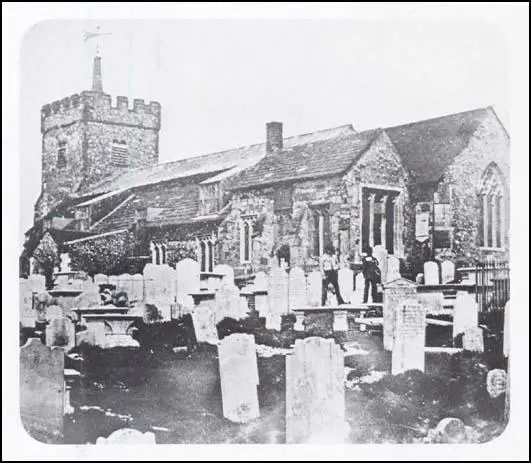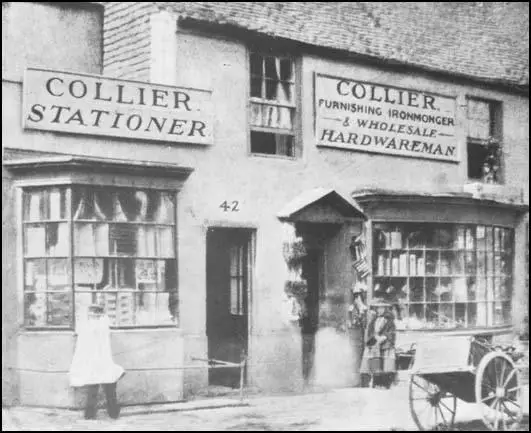EARLY PHOTOGRAPHIC VIEWS OF BRIGHTON

St
Nicholas' Church (c1850). A daguerreotype by George Ruff senior
Before the arrival of Meurant in 1852, there is no record of any
professional portrait photographers in Brighton who could compete
against William Constable. However, there is evidence that there
were other "photographic artists" making daguerreotypes
and early photographic views of Brighton between 1850 and 1852.
George Ruff, described as a 24 year old "painter in
oil and watercolour" in the 1851 Census, was using daguerreotype
apparatus to capture local views and buildings around this time.
George Ruff, who painted landscapes and marine scenes, made a daguerreotype
of Brighton's St Nicholas Church around 1850 and it is likely he
made other daguerreotypes, either as an aid to his landscape painting
or as 'works of art' in their own right. Edward Fox junior, who
specialised in landscape photography, was the son of a London born
waterolour artist who had settled in Brighton around 1820. Edward
Fox junior, also described himself as an artist and in the 1850s
he earned his living as a decorative painter and designer. By the
early 1860s, Fox was advertising his landscape photography and in
his later advertisements mentions that he had "given his whole
attention to Out-door Photography since 1851." Edward Fox was
based at 44 Market Street and a photograph believed to date from
around 1851 shows the neighbouring shops at Nos 42 and 43 Market
Street.

Numbers
42 and 43 Market Street, Brighton (c1851). The photographer is not
named, but Edward Fox junior, lived at 44 Market Street and was
taking photographic views of Brighton as early as 1851.